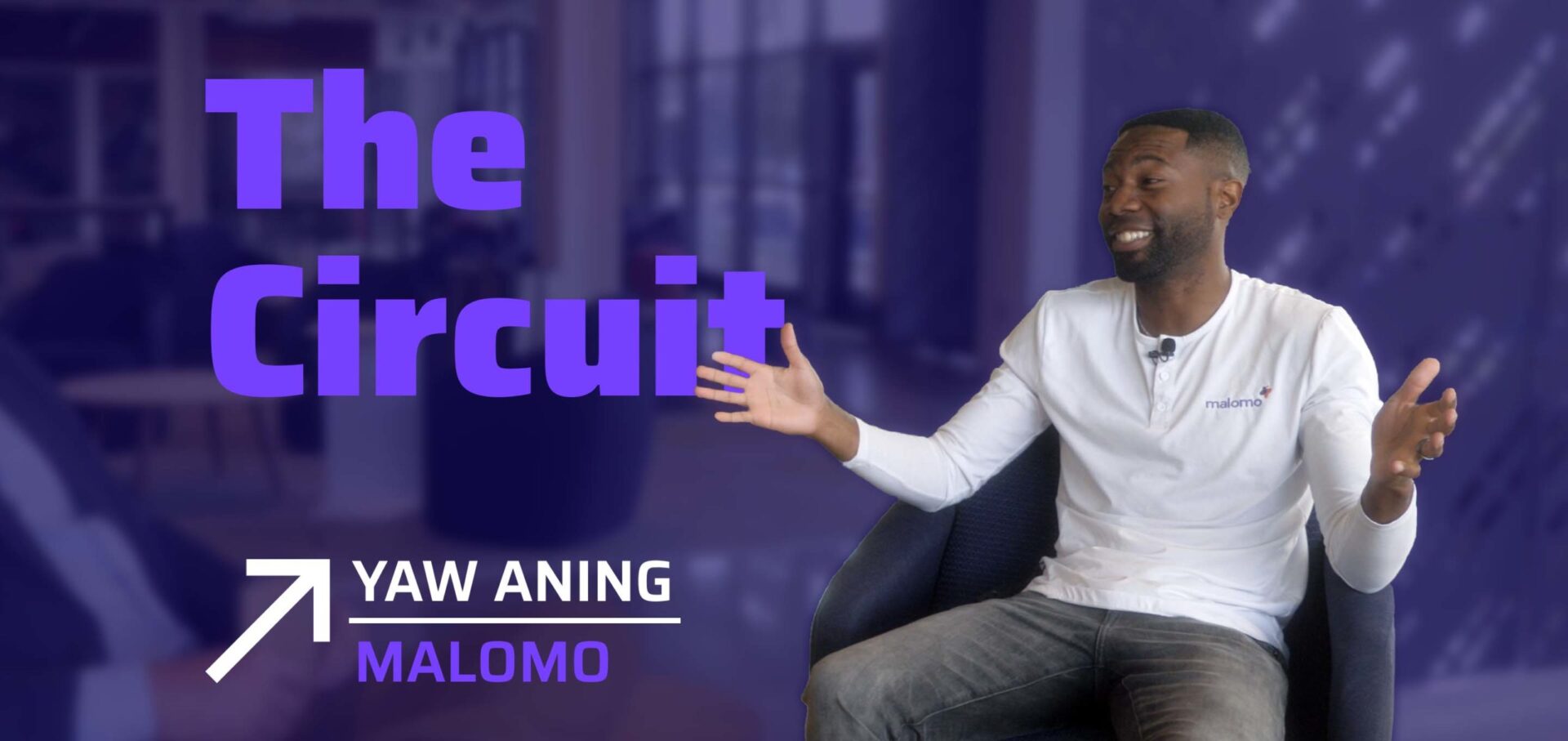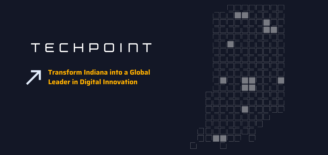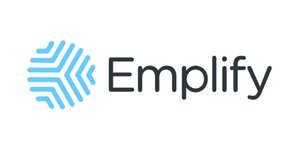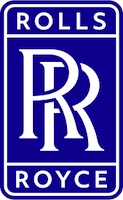Yaw Aning | Malomo: Disrupting Ecommerce and the (4-Day) Workweek
In this episode, we chat with Yaw Aning, CEO and co-founder of Malomo. Malomo is disrupting the ecommerce industry by empowering retailers with the ability to market to customers during the shipment process. We talk about the marketing opportunity Malomo saw in shipment tracking, Yaw’s entrepreneurial journey, and the results of Malomo’s recent 6-month-long pilot of a 4-day workweek.
Roger Shuman
Thanks for tuning into the Circuit. Our guest today is Yaw Aning with Malomo. Thanks for being here today.
Yaw Aning
Yeah, thanks for having me.
Roger Shuman
Uh, first off, for those not familiar Malomo, can you describe it at a high level? What the company does and the customers you serve?
Yaw Aning
Yeah, for sure. So we, Malomo is a shipment tracking platform for e-commerce businesses. So we work with, you know, growth stage retailers that sell online directly to their customers and we help them manage the delivery experience. We kind of level the playing field for merchants who compete against the goliath that is Amazon, right. Delivering that really crisp, clean customer experience around delivery.
Roger Shuman
Yeah. That was actually a question I was gonna ask you with regards to Amazon, do you create something that allows them, you said to level the playing field, to have an experience that allows them to compete with companies that are doing business on Amazon.
Yaw Aning
Yeah. So if you think about Amazon, one of the things that they’ve succeeded at in a really tremendous way is they drive a ton of customer loyalty and they do that predominantly through their prime program, right? Where like you subscribe and you get, you know, you get this amazing experience around delivery, free shipping, free returns, and they are hyper transparent with you about where your package is enroute and those three things really help drive that, desire within consumers to want to buy with them again because they make that so frictionless to do right. The merchants that we work with are traditionally not selling on Amazon, they’re selling direct to consumer through their own website, and they don’t have the technology or tools to connect to this global delivery infrastructure, where they can track packages at scale to every single customer and alert them of where their orders in transit and keep them up to speed on what’s going on. And so we, we help them provide that customer experience, to help them compete with Amazon and drive more loyalty in their business.
Roger Shuman
Okay. So these are small to medium sized businesses?
Yaw Aning
Yes. Yep. That’s right.
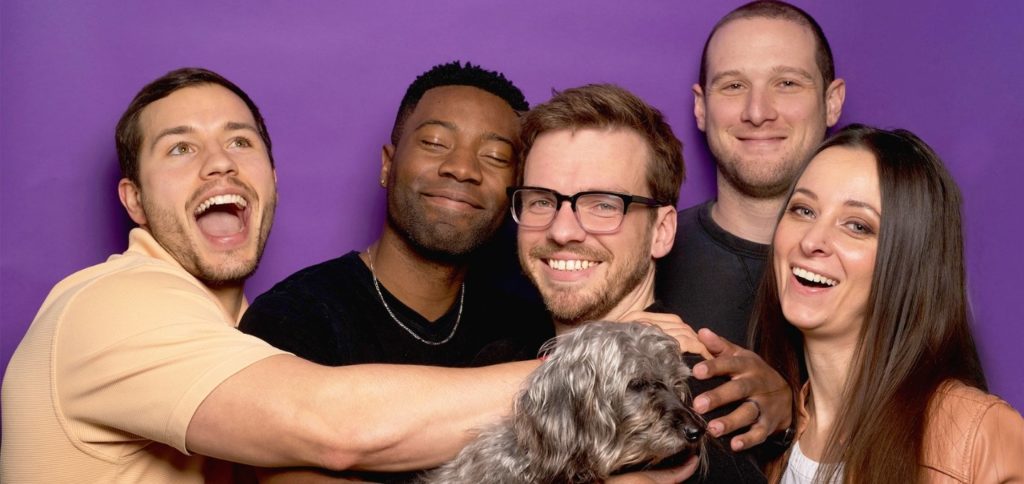
“Do not go away.”
Roger Shuman
And then, so the name Malomo, it’s… I’ve looked it up. So it, it’s African which means do not go away or do not go anywhere?
Yaw Aning
Yes. So, and funny story. So, the name actually comes from my mom. She ran a soap business and so, that soap business, she was, she was going through a health problem at the time. And, she had to stop working and moved home, but really entrepreneurial spirited and got into soap making. And then when people would come and visit her while she’s going through treatments, she’d hand out her latest bar of soap and she’d launch into these stories and conversations. And you could just tell it really like lit up her spirit when, when those things, those things happened, so she named that company Malomo. We, my sister and I asked her like, where’d that name come from? And she’s like, don’t know, it just popped in my head one day. And lo and behold, we didn’t, I actually didn’t find out until after, that the name had that meaning of don’t go and it actually plays so well into our mission, which is perfect. Which is like, we want to wanna drive these relationships and create lasting customers for the merchants that we work with.
Roger Shuman
So now out of all the different marketing channels to focus on, cause you come from a background where you were doing a lot of consulting for other companies in the past. What was the opportunity that you saw in shipment tracking?
Yaw Aning
Yeah, so we kind of, quite frankly, we kind of stumbled into it. So we, I ran a consulting agency called Sticksnleaves with my co-founder now Anthony Smith. And we were working with, a lot of early-stage companies towards the latter half of running that agency. we started working with a lot of direct consumer brands and they would come to us with, you know, we need to, you know, we’re using Shopify and we need to build some custom product or tool to help plug into Shopify to help us power some part of our customer experience or around operations in our company. and so we got exposed to the Shopify ecosystem and, and, it was just eyeopening to us how, how, how large these businesses were. I think a lot of people looked at Shopify as like, oh, you, if you’re running a small mom and pop business, like you’re using Shopify.
Yaw Aning
If you’re a big player you’re, you’re selling through marketplaces like Amazon or Walmart, but we were just blown away by, you know, you’d see these, these teens of five or 10 people doing five or 10 million in revenue, and, and just scaling tremendously fast, but really struggling around that, that post-purchase experience. and so what, what we ended up doing was, you know, what, if we could build a tracking platform to help them control customer complaints, whenever delivery problems occurred, we built a small prototype, gave it to our consulting clients and we had this aha moment where we saw consumers look at the tracking emails, 10, 15, 20 times during a delivery having worked with these merchants in the past, they’re always looking for an edge on, on trying to grow their, their business in software. We’re lucky in that when we sell a customer, once they typically tend to pay you month after month, over time, right. In e-commerce, you’ve gotta resell every single customer every single time you want to drive revenue. so we thought, well, what if we could use that customer engagement and actually turn it into a growth asset for the merchant, and kind of turned shipping into this marketing channel and being in Indy, in the MarTech of the world. Right?
Roger Shuman
Absolutely.
Yaw Aning
It, it kind of made sense. And so that’s what we did. Yeah. We combined the two things into one, this one kind of platform.
Roger Shuman
So then I’ve heard, Malomo described as a shipping tracking platform. And you even said it as well, but at the end of the day, are you an ecommerce company? Logistics? Customer experience branding all the above? What would you call yourself?
Yaw Aning
Yes. All the above. Yeah. I mean, we, we help our, our, so we call ourselves a post purchase experience platform. but we help our clients kind of manage all of those things. Right? Like delivery’s kind of an emotional part of the customer journey when you buy something online, there’s, there’s this, this emotion of being super excited, like it’s Christmas, but you’re also super anxious. Like, did you buy from a reputable brand? You might have just stumbled on an ad on Instagram. You know, you don’t actually know if you’re gonna get the package or whether it’s gonna be delivered in a timeframe that makes any sense. so we help manage that, that kind of transparent communication, but we also help our clients grow their business kind of serving as a ecommerce company where we help our, our clients strategize around how can you cross an upsell right. To, to consumers while they’re waiting for their current delivery in transit? can we manage the customer experience at whole? So people really feel like they’re, like they have a really good understanding of their package and you build trust with that consumer over time. So yes, all of the above.
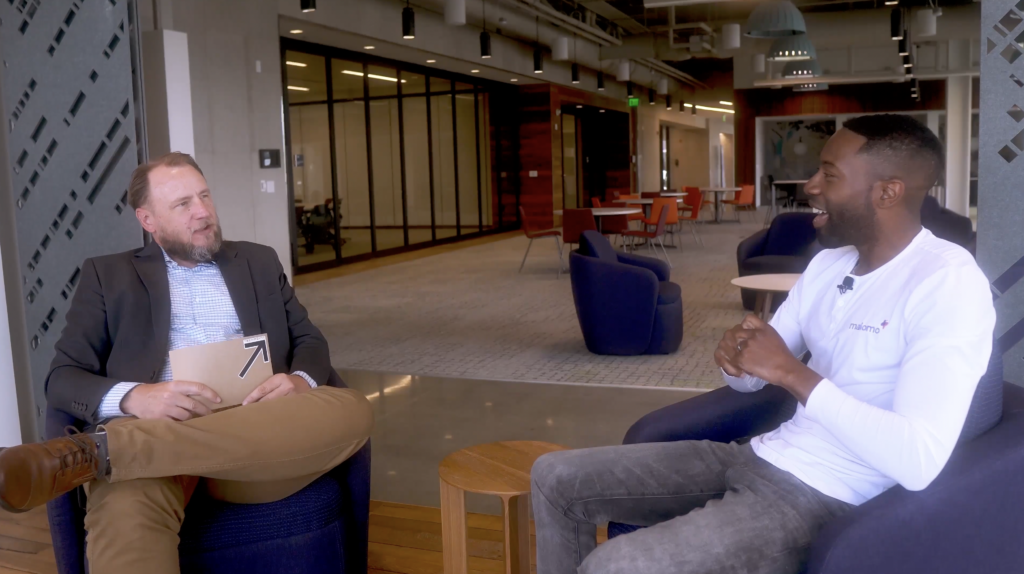
COVID and the Evolution of Ecommerce.
Roger Shuman
Now, I’ve also, I’ve heard you say, COVID reset consumer behavior. And that hundreds of millions of people began ordering products online, who weren’t ordering before. So, which is obviously a real boon for a company like Malomo. As we continue to climb out of this sheltering phase of the pandemic, how does that impact your business?
Yaw Aning
Yeah. Yeah. So, it’s a great question. We see the impact in two ways. COVID reset expectations and it created this new buying behavior where people who traditionally may not have bought online felt they felt very comfortable buying online because they had no other choice. They had to really re-acclimate to this new world. And so you saw the percentage of commerce that was happening, through digital channels, double, triple through this period. As the world opens back up, we don’t expect consumer behavior to really change. We expect this movement that was already in motion in retail, moving online to continue. We are seeing this a slightly slower trend though with orders as we kind of get back to this new normal, where COVID sent e-commerce here, where the normal trajectory might have been here. It’s resetting. So it’s going back to that normal, but it’s still yeah, on that acceleration trend.
Roger Shuman
I mean, I would expect, you know, it, during their, in the pandemic, you know, like you said, hundreds of millions of people were now ordering online, but in addition to ordering like cameras and computers, they’re ordering soap. And household, you know, household cleaners and food. And like, you know, I order some of that stuff online too, but I may not be looking at my phone every five minutes to see, you know, where my Doritos are. But if I’m ordering something that I really care about. I mean and once I figure out that, like, that can be a key part of the ordering process I would think that is something we keep people coming back again and again.
Yaw Aning
Yeah. Yeah, absolutely. Absolutely.
Roger Shuman
So since filing the company four years ago, Malomo’s raised over $8 million in three rounds. You’ve received two Mira awards. Congratulations.
Yaw Aning
Thank you.
Roger Shuman
And very recently made it into the SMBTech 50 list, which is actually another pretty cool accomplishment too. What do you equate all this rapid growth to? What is it about, about Malomo that was the right idea for the right time?
Yaw Aning
Yeah, it’s a great question. So you had this, I think we, we, you know, there’s a, there’s a bit of, there’s quite a bit of luck in there, right? Like we, sure, we were lucky in that we had spent a lot of time in this Shopify ecosystem early on, pre[COVID and we saw this trend ecommerce accelerating, at a pretty rapid pace. You had this, this consumer behavior that had been set with Amazon and making people feel very comfortable buying online. And we were just, we were in the right place at the right time. We had tailwinds from COVID right? Like that, that obviously helped our growth trajectory. But I think another big part of it was a team that we were able to put in place and really, really attack the, the concept, as quickly as we could.
Yaw Aning
Like it was obvious that people, people were really comfortable buying a lot of things. They discover new products and services, through digital channels, like Facebook and Instagram and these merchants, you know, like I said before, they were experiencing such under-the-radar growth, that like, we were just lucky to be in that ecosystem as it was starting to advance. And so, you know, a lot of what we did was pay attention to customer needs, and work as fast as humanly possible to serve those needs. And then, you know, this, I think the story goes, you know you can’t time a market. Like you can just be in this space that you hope that you hope experiences that level of growth. Unless, so I think those combination of all those things has held through the drive.
Roger Shuman
Yeah. Certainly there was some luck you’re in the right place at the right time, but if you’re in the right place at the right time with a bad idea and no execution, then, you know… So obviously you had some of the pieces together and some of your experience from past companies as well.
Yaw Aning
Yes. Yeah.
Roger Shuman
So in the early days of Malomo, you were interviewed by TechPoint and we asked you why you chose to take on investors with Malomo? Because in the past, like with other companies like Sticksnleaves, you were bootstrapped. So what was the decision process and how has it played out? Why did you decide to take on investment, this time around and what’s been the impact?
Yaw Aning
Yeah. So one of the reasons that we decided to take investment this time around was we saw the market emerging in very quickly, in software, you tend to see winner-takes-all or winner-take-most happening. And we just, I feel like we had, we had just discovered this like, hidden opportunity. That was, that was in plain sight.. and so we really wanted to move aggressively and kind of set a leadership position with our brand and our product and you just can’t do that. Bootstrapping, you know, you just, you gotta move slower, you gotta move more judiciously. And so we just knew that we really wanted to move fast and take advantage of the opportunity. We also felt like, you know, having partners who could help us scale at that pace was gonna be paramount to our success.
Yaw Aning
We were fortunate to know the team at High Alpha and Hyde Park before we’d started the company and shared early visions. And I think they, their expertise around email marketing, around SaaS, you know, there, we, we could learn, years worth of things without having to kind of make mistakes. And so, that has been, those partnerships have been tremendous. It’s helped with recruiting, they’ve introduced us to hires, it’s helped with our brand and recruiting in the Indy ecosystem as well. They’ve helped us here on corners and understand how we can navigate problems as we experience growth. We’ve gotten customer introductions. And so it’s been just a tremendous, tremendous experience partnering with these folks and in figuring out how to grow the business.
Roger Shuman
Absolutely. I mean, there’s no, there’s no sense bringing on a big check, unless that check also includes some expertise or experience or customers. Because it’s gonna help you in the long run.
Yaw Aning
Yep. Yeah.
Roger Shuman
Absolutely. Alright. So, so you work with companies, you mentioned one like, like Shopify and Klaviyo, and they were once scaling up technology companies too. Shopify is now publicly traded Klaviyo. Their last raise was a Series D of $320 million, which is a… that’s a mega round. These companies appear to be in it for the long haul, where you see Malamo in five, ten years?
Yaw Aning
Yeah. So I’d love to build a pillar company in Indy. Indy’s been great to me. And I’ve learned so much and made so many connections here that, I think it’s important to continue that innovation streak here in Indianapolis, you know, my co-founder and I, we are, we are trying to build a large, independent, durable business. And for the pure fact of, we really love this problem and we believe in the mission, and we want to spend decades trying to figure out how to crack the code around this. You know, the way that we look at the business is Shopify made it really easy for anybody, small mom and pop shops all the way up to big public companies, independent retailers to build and scale their commerce businesses, and drive people to the buy button. We want to do the exact same thing for post purchase. Help those small mom and pop retailers all the way up to the big independent companies craft these experiences that delight and entertain and communicate to their end consumers. and so that’s, that’s what our end goal is to do that here in Indianapolis.
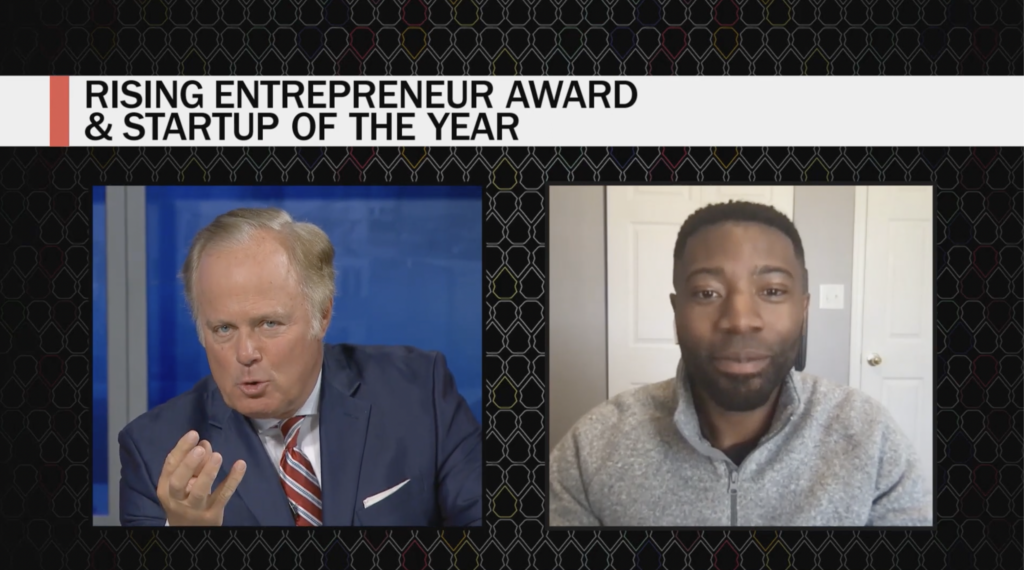
From Civil Engineers to Orr Fellows: Yaw’s Entrepreneurial Journey.
Roger Shuman
So you mentioned in Indianapolis, let’s talk a little bit about your professional journey. You grew up in Minnesota after your parents immigrated to the US, but you came to Indiana to go to school? And you went to Rose Hulman? And you studied civil engineering?
Yaw Aning
Yes. Yeah.
Roger Shuman
Which is an obvious connects to what you’re doing right now.
Yaw Aning
Right.
Roger Shuman
But what drew you to the school?
Yaw Aning
Yeah, I, so interestingly enough I had never heard of it. I played soccer really…
Roger Shuman
Yeah. You’re a soccer player.
Yaw Aning
Yeah. And I was, I was dead set on, on going to the coast. My parents were like… I feel like many immigrant parents were…
Roger Shuman
They kept you grounded.
Yaw Aning
Right. You’re going to an Ivy League school. You’re studying. You’re studying law, you’re studying accounting. Right. And so lo and behold, I, was, we were at a tournament. And the coach at Rose Hulman saw me, saw I had listed architecture, engineering, math, and science as like interest areas. And he beelined it to my dad and kind of sold my dad on, hey, you gotta come for school visit and came down to the school and was just blown away, at both the academics and the athletics. Yeah. Like they, that the Colts had their training facility… their summer training…
Roger Shuman
Yeah. At the time that’s right.
Yaw Aning
And the facilities were imaculate because of that. And, I just felt like I got that great combination of both athletics and academics. So that’s why I chose the school.
Roger Shuman
So with the focus on civil engineering, what prompted you to look into the Orr Fellowship because you’re an Orr Fellow?
Yaw Aning
Yeah. So I, civil engineering, I love the intersection of art and like math and science. And so civil engineering was that great combination where you could design these beautiful buildings, and then do the hard math and science around how they get, they get built and stand the test of time. I really wanted to start a company as well, and I knew it’d take forever to launch a civil engineering company. and I’m pretty impatient. So I, around my junior year, I looked for opportunities to kind of get off that career path. And again, as luck would have it, saw a job posting for the Orr Fellowship. And I, it just looked like a dream opportunity to just get off that crew path, dip my toe in entrepreneurship, learn from the best. And I applied having no expectations that I’d have a shot. I was assuming it would be all IU Kelley grads, finance or business backgrounds. That I was, you know, I was determined and, you know, luckily had four job offers all taking me out of Indiana. And the one that was here was the Orr Fellowship and felt like I couldn’t pass it up.
Roger Shuman
Yeah. And that job that was, was at City Securities corporation. So tell me what you did there and what did you learn?
Yaw Aning
Yeah, so I was a financial analyst there. Again, great segueway from civil engineers.
Roger Shuman
Yeah.
Yaw Aning
Um, but I worked in their corporate finance group and so cities and investment bank, and the, the corporate finance group helped, kind of growth stage companies with mergers and acquisitions, as well as raising private equity debt and venture capital.
Roger Shuman
Right. So that had to feed your entrepreneurial spirit?
Yaw Aning
Yeah. It was, it was just a great, great kind of first step into the business world. And, really helped kind of set that foundation.
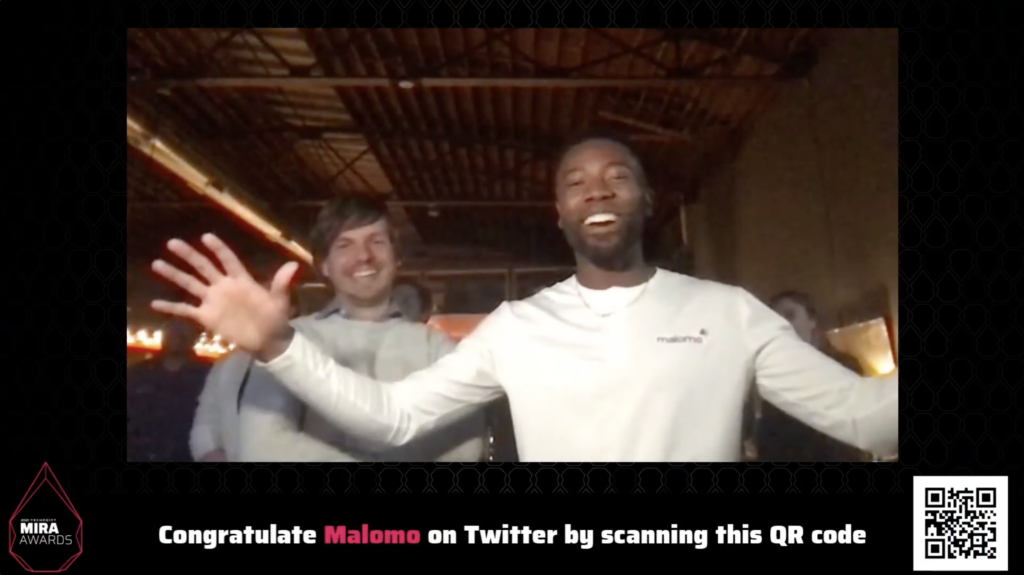
Pocket Tales, Sticksnleaves, and Anthony Smith.
Roger Shuman
So after City Securities, you start your first company Pocket Tales along with Anthony Smith. So talk to me about the inspiration behind that platform and what lessons you learned from that.
Yaw Aning
Yeah. So Pocket Tales is an online reading game for kids. we actually came up with the idea at a Startup Weekend. I don’t know if they still happen or not.
Roger Shuman
Yeah, they do. I don’t know who’s doing them right now, but yeah.
Yaw Aning
Yeah. So the Startup Weekend was you go to this event and try to build a company in a weekend. The original idea was to take children’s books and turn them into iPhone apps. So this was right around the time that the iPhone had just started accepting third-party developers. Nobody knew how to create like businesses on top of this. But it was just like really cool and interesting. And so we decided to, to kind of take a stab at that, did some customer interviewing and the first thing out of parents’ mouths was this is really impressive, but I’m not gonna give my kid a $600 device. Right? There’s no way.
Roger Shuman
And now they all have them.
Yaw Aning
And now they all have them! Yeah.
Roger Shuman
And they have iPads and yeah…
Yaw Aning
Yeah, yeah. now schools are going to one-to-one.
Roger Shuman
You were, you were just ahead of the game.
Yaw Aning
Too early, too early, too out of our time. Yeah. So that, that was it for the idea.
Roger Shuman
And so Anthony Smith was a part of that company as well, right? So he’s, he’s been a fixture throughout your entire professional career. So can you talk to me about how the two of you met and have worked collaboratively?
Yaw Aning
Yeah, so he, so I had started Pocket Tales and he had actually joined me with that company later. o I, he, the way he tells it, he, I think he saw a random article about what we were doing. He’s a developer by background. And really wanted to start a company.
Roger Shuman
He’s a Purdue guy?
Yaw Aning
Yeah. Purdue grad. Yeah. And, and saw the article and just, he was, he’s a huge, voracious reader. And so that intersection of like reading and tech, was like, perfect. And so he just reached out to me. We grabbed coffee, hit it off, and, and became fast friends. And over the course of about three months, just really talked through partnering together and it really felt right. And, yeah. And joined forces.
Roger Shuman
Three companies later, you’re still working together.
Yaw Aning
Still in the trenches. Yeah.
Roger Shuman
So after Pocket Tales, you then started a consulting firm called Sticksnleaves. What inspired you to go in that direction direction instead of starting another software company?
Yaw Aning
Yeah. So funny enough. So Anthony actually started Sticksnleaves. He was doing some independent consulting when he and I met. So, you know, we did not have funding for Pocket Tales at the time. So we, you know, nights and weekends, we were working on Pocket Tales and we needed money to come in so that we could continue to do things. And so since he was already kind of consulting on the side, he, you know, he said, why don’t we just bring in a few more consulting projects? And you know, we can, we can sustain ourselves in that way. And the consulting business took off pretty immediately. We landed contracts with Rolls Royce and a couple early-stage companies hired some folks and continued to like incubate Pocket Tales inside of Sticksnleaves.
Yaw Aning
And, you know as these things go, we, you know, it’s, it’s hard to run two companies at once. You know, so, what ended up happening is the consultant business got all the love and the attention and Pocket Tales… we just weren’t able to continue to devote the resources that it needed to thrive and get the traction. And so we ended up shutting down Pocket Tales and going full force that Sticksnleaves. And over the course of about seven years built about a hundred different web mobile SaaS products. Yeah. reaching about 15 employees at its peak.
Roger Shuman
Yeah. That’s what I was gonna ask you next. So, you know, you help launch mobile experiences for some pretty big companies. You mentioned Rolls Royce. Emplify. ClusterTruck. CoatChex. What were some of the unique challenges in pivoting between these different industries and what about that experience laid the foundation for starting Malomo?
Yaw Aning
Yeah. So I think one of the most exhilarating, but most challenging things about consulting when you’re working in a lot of those different industries is you’ve gotta, you’ve gotta start from zero every time. You’ve gotta have a beginner’s mindset and really try to understand the customer pain points, the market dynamics from, kind of this, this first principal’s viewpoint. And you rely on the companies that you’re partnering with to give you some of those insights. The beauty of that is you get to try your hand at a lot of different solutions and you get to see how a lot of different markets intersect or don’t. And that convergence, I think helps you inspire new ideas. And you kind of build this muscle for thinking creatively. And so those were, those were, really helpful.
Yaw Aning
We, oddly enough, a lot of the companies that we worked with, so Bluebridge, ClusterTruck, Emplify, CoatChex, they were all, they were all B2B2C companies. They’re building software that they sold to other businesses, but they’re delivering a consumer experience to the end-users. Which is what Malomo is. Like, we are selling software to ecommerce marketers, but they are trying to deliver really unique experiences to their end consumers. So just that, that experience was just, you know, you can’t buy that. It, again, talking about that luck thread, we were fortunate to get the opportunity to be able to do that, you know, dozens of times for our consulting clients and get really, really good at managing both of those, those audiences and stakeholders with, with the technology product.
Roger Shuman
And I think you referred to it early on in the interview, but at some point a light went off and you were like, wait a minute. This is a, there’s a whole piece here that we can solve for. And so it was time to shift gears from sticks and leaves to Malomo.
Yaw Aning
That’s exactly right. That’s exactly right.
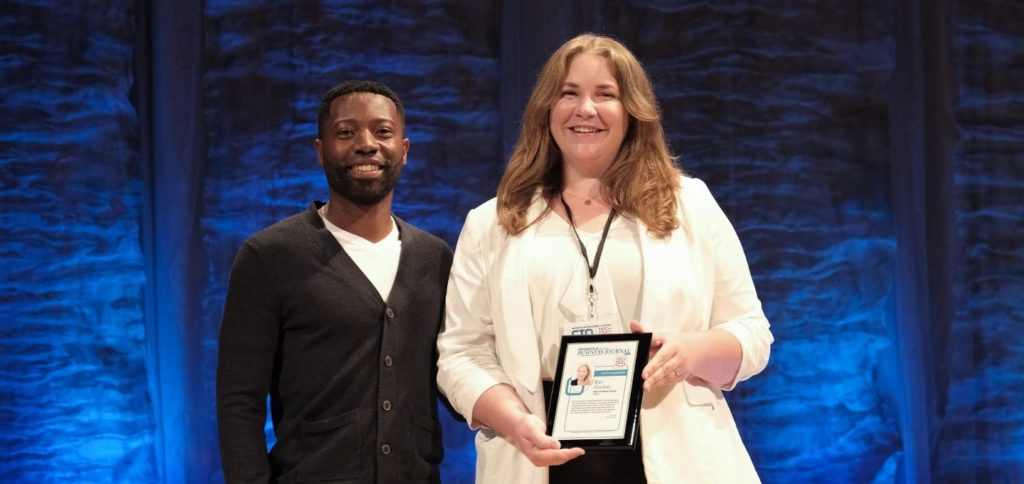
The Four-Day Workweek.
Roger Shuman
Alright. So let’s shift gears again. I wanna focus on another bit of news that you had recently back in January. You announced that Malomo was gonna pivot to a four-day workweek for six months, curious to know what originally prompted you to explore a shorter work week.
Yaw Aning
Yeah. So we were, we were not thinking about a four-day workweek at the time we were talking through this as a team. There was just so much happening just in the macro environment, that we felt like we really needed to prioritize our team’s kind of mental health and wellbeing. And so we, we were talking through ways in which we could do that. And as a leadership team, and we were thrown around ideas, and one of the ideas was, should we, should we take, you know, a week off in one of the upcoming months, or should we take a couple days off? And we did it primarily in anticipation of, the Super Bowl season of e-commerce which is the holidays.
Yaw Aning
So in September, you know, what we did was, you know, we decided to, to use that as a month to really help our team recharge and energize, as we were talking through that, two of my leadership leadership team members came to me separately and said, hey, have you heard about this 4-day workweek? And like, you know, what do you think about it? And we, you know, we had very transparent conversations. In my mind I’m like, that’s, this sounds really great. There’s no way, right? There’s no way we’re doing this, but when they too, when they, they both came independently, it kind of made me positive. Like, well, maybe we should consider this a little bit more deeply. And so we had a lot of conversations and it ended up saying, okay, we don’t know if we’re ready for this, but let’s dip our toe into this a little bit.
Yaw Aning
We’ll dub September mental health month. We’ll take, one day off a week for the entire month. And we’ll kind of run a test. We’re not gonna tell the company that we’re running this test. We’re just gonna tell them we’re, we’re just, we’re just prepping for the holidays. what ended up happening was kind of eyeopening, that month we surveyed the team afterwards, asked them questions around, like, do you feel like you’re more or less productive? Do you feel like you were, your mental health was in a better place or not? Did you have more time to spend with your family and did you feel like you got enough done at work? And, you know, resounding yes across all those categories. So then we looked at company performance and in September we broke company records.
Yaw Aning
Most sales, highest number of marketing leads, biggest product launches that we’d had. And so we thought we can’t ignore this data. This seems like our employers are happy, happier, and they’re delivering better results for the company. We’ve gotta think through this a little bit more. And so that’s when we decided to maybe do a longer test, you know, we still weren’t. We, as a company, we didn’t want to just fully commit to something without knowing potential repercussions over this, over the long term. And so we decided to run a six month test, we’re coming up on month six at the end of June, so we surveyed the team and continue to get really, really positive, impactful results.
Roger Shuman
Well, and I think, you know, a lot of us who work in tech have, have had the experience during the pandemic that especially if you’re working remotely, you know, you can be working anytime. And yeah. Sometimes it takes someone to tell you to shut it off to where you actually take a break. And you probably were getting tons more productivity out of your employees, especially if they like their job. Because they’re gonna just jump in and they’re gonna work and work work because they can see results. And so I think you did your company, you did your employees a world of so much good by telling them to turn off.
Yaw Aning
I appreciate that.
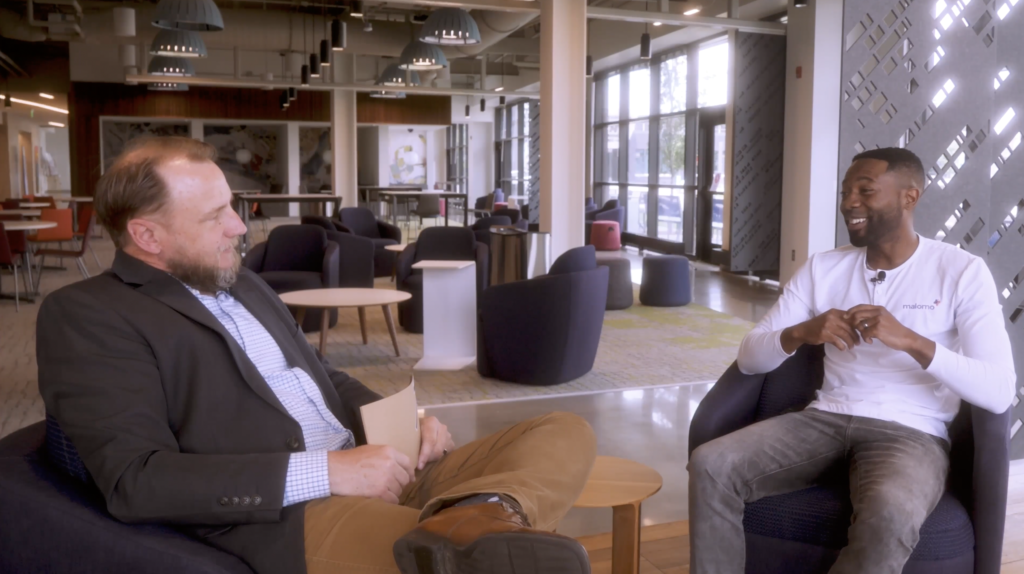
Results of Malomo’s Six-Month Pilot.
Roger Shuman
So you’re about at the end of that six months. How’s it going?
Yaw Aning
Yeah. It’s, it’s going, it’s going great. Yeah, it’s going really well. When we talk to the team, you know, they all seem very, very happy about it. Like we, we asked point blank, should we continue to do this? And a hundred percent of the employees said, yes.
Roger Shuman
No one said they wanted to work another day?
Yaw Aning
Surpised me! Quite shocking. But we continued to see really fantastic, results inside the company. One of the things that was unexpected for me is that, you know, I think people think about four-day workweeks as it’s easier. It’s you get one day off a week. What it actually is, is it’s more intense, right? Like you, you are trying to accomplish, the same amount of output in four days.
Yaw Aning
Not like four days in 40 hours, it’s four days in 32 hours. So you’ve gotta be really militant with your time. You’ve gotta, you’ve gotta remove roadblocks within the team. You’ve gotta think more creatively about solutions cause you don’t have a lot of time to work on them. And people go fast for four days, because they also know they can, they’ve got three full days to recover. They have one day where they can just turn off and not think about things and then they have the whole weekend to do personal things.
Roger Shuman
So you’re not telling them to work an extra two hours every day to make up for lost time?
Yaw Aning
Right. Right.
Roger Shuman
Are you, does everyone take the same day off?
Yaw Aning
Yes.
Roger Shuman
So it’s Friday or Monday or…
Yaw Aning
Okay. Yeah. That was a discussion point inside the company too. Like, should we, should we scatter or rotate days off and yeah, one of the things that we we heard was, well, if, if one person’s not working one day, they’re inevitably gonna feel a pull to come back in cause the whole company’s still working.
Roger Shuman
Right.
Yaw Aning
Yeah. so we all decided it’s gotta be one day the whole company’s off. So you can turn off.
Roger Shuman
What have been some of the unexpected benefits of this experiment so far?
Yaw Aning
Yep. So there are a couple, there are less meetings inside the company. that’s a, that’s a big one. Yeah.
Roger Shuman
That’s gotta be a relief for a lot of people.
Yaw Aning
Yeah. You, you gotta be a hundred percent focused on the most important things people prioritize. The work that’s most impactful. We got, we as a management team have to think very clearly about where we aim the company because there’s just less time to do things. And so you prioritize the highest impact things and the other thing you know, I have a running joke inside my own head, that I hope many companies adopt this, but I also hope they don’t, as we get a ton of recruiting benefits.
Roger Shuman
Right.
Yaw Aning
Ton of recruiting benefits, our sales leader, when we were hiring for, we were kind of almost tripling our sales team, put out a post around what we’re doing and the post went viral, right. We got 300 applicants for six positions. And that sort of, kind of recruiting power, the type of talent that you might attract, is unparalleled. So, that’s been another unexpected benefit of the program.
Roger Shuman
So you said you, you know, iyou do want other companies to adopt it overall for the health of employees, but in a way you don’t because you like the competitive advantage you have, and you’re a true entrepreneur I appreciate that. But, have you seen other companies that have taken it on as taken on the four-day work week as well here inIndy?
Yaw Aning
Yeah. Yeah. So we we’ve, I’ve gotten the flood of messages from folks and it’s polarizing. Yeah. Like there are some people who think like, no, like why would you do that? It just seems like, you know, you are not gonna serve your customers as well, your employees, they, you know, they might not want a dictated day off. I’ve seen lots of commentary around it, but all folks who haven’t done it before. But I’ve also gotten the other side of the equation where a lot of companies have reached out to us for guidance. And insights around like how to structure these things and people have taken the plunge.
Roger Shuman
And so you bring up a good point though. So if you’re a software company and you’ve got users, those users aren’t taking Friday off. Some of those users aren’t taking Saturday and Sunday off. So if they have a problem with your software, how do they get it resolved?
Yaw Aning
Yeah. So we, we still have around the clock coverage.
Roger Shuman
Got it.
Yaw Aning
So what we do is we rotate, customer support staff and engineers, who are on call on those Fridays. And so, we still, have the same SLAs to deliver customer support responses. We still solve problems for our customers on those Fridays. What’s been interesting is we tend to see the lowest volume of support tickets on Fridays. So we don’t, you know, although we do have that support there, we don’t see a ton of volume from our customers on Fridays.
Roger Shuman
Makes sense. I get the fewest emails on Friday.
Yaw Aning
Yeah, yeah. Everyone’s kind of winding down for the week.
Roger Shuman
So do you think Indy can be a leader in this four-day workweek?
Yaw Aning
Yeah, I hope so. I mean, I think we’ve got an opportunity to kind of set a trend. I feel like, you know, the Midwest spirit it’s, you know, hardworking, humble, hungry, smart. And we like to take care of our people. I would love for Indianapolis to be like an epicenter for this type of new way of thinking and working. I think it has a lot of benefits for the morale of employees and the output production of these companies. And if we can continue to be that powerhouse in Indianapolis, I think the trend for the ecosystem at large will be pretty, pretty dramatic. Yeah. So I’m very hopeful.
Roger Shuman
Cool. And hopefully it helps you to continue to attract new employees to come work for you.
Yaw Aning
Yes. Yeah, absolutely.
Roger Shuman
Great. Well, I appreciate your time today, Yaw, for coming in and talking to us and, just would wish you guys continued success. And, we’re glad to see that you’re here in Indy. You’ve made Indiana your home and you continue to grow here.
Yaw Aning
Thank you very much. I appreciate the opportunity. This has been a lot of fun.
Want to stay up to date on when the next episode of The Circuit is released? Make sure to subscribe to TechPoint’s Index newsletter. You can also subscribe and download the audio version of The Circuit on Apple Podcasts, Spotify, Stitcher, or where ever you listen to podcasts.

